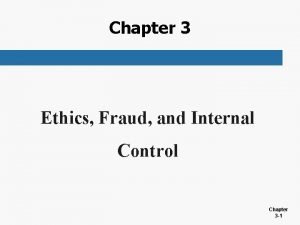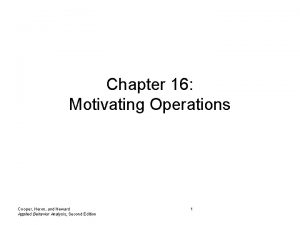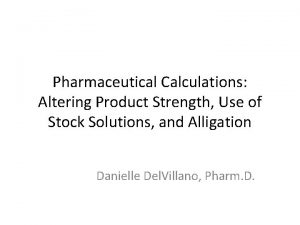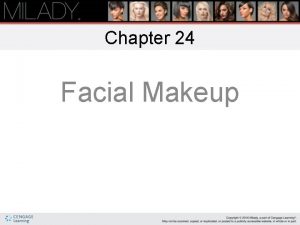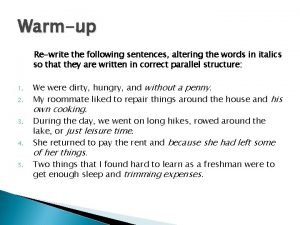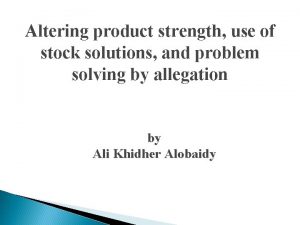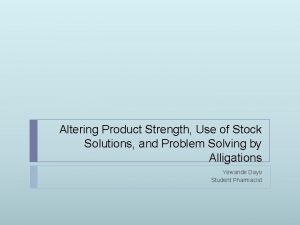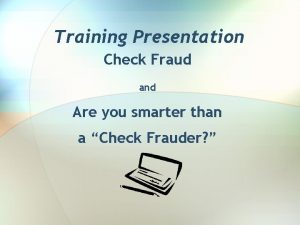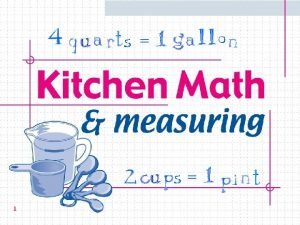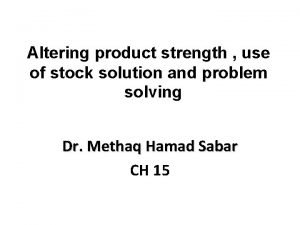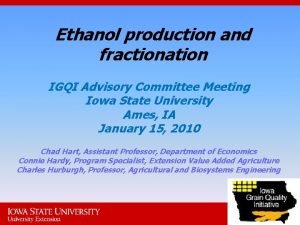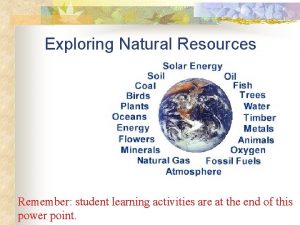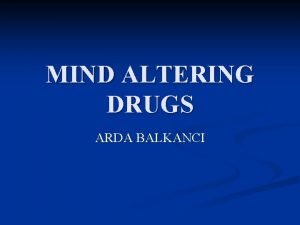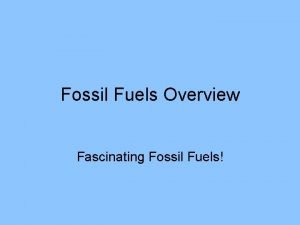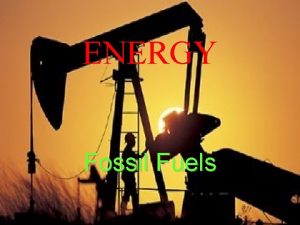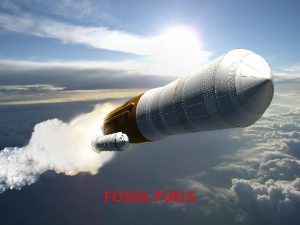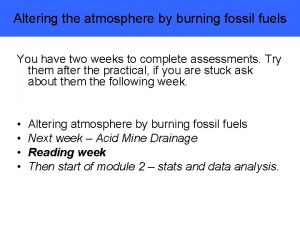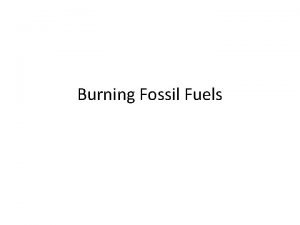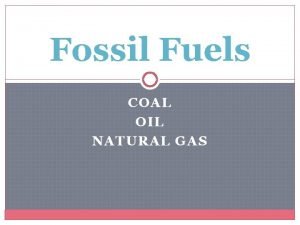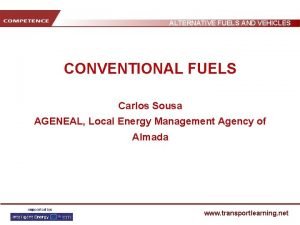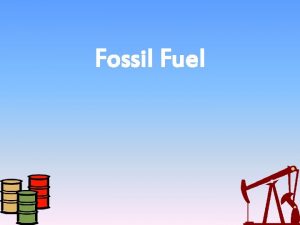15 8 NOTES Altering Fuels Altering Fuels The














- Slides: 14

15. 8 – NOTES Altering Fuels

• Altering Fuels • The gasoline fraction only represents 18% of the total crude oil (5 12 carbons in a chain) • Using certain techniques can get up to 47% of crude oil

• Cracking • Taking large chain hydrocarbons and breaking them into smaller chains, using catalysts and heat •

• Catalyst • Something that increases the speed of a reaction and lowers the temperature needed to start the reaction • They are not used in the reactions – they are not part of the product • • Allows the burning of fuel to be cracked more efficiently because it takes place at a lower temperature (500 C rather than 700 C), which needs less energy

• A 16 carbon chain could be made into two 8 carbon chains • Can produce molecules of up to 14 carbons through cracking • C 5 C 12 are used in gasoline

• Octane rating • Gas is made of mostly straight chain alkanes • Premature burning results in pinging/knocking • Branched chains don’t knock as much • • Octane rating tests efficiency • Free running and under a load and then the average is taken • Higher octane numbers result in better anti knock characteristics • • Prior to the 70 s, lead was added to increase octane rating • Tetraethyl lead ((C 2 H 4)4 Pb) • Why was lead banned from fuels? • Bad for the environment, can cause many health problems


• Oxygenated fuels • Fuels that have extra C, H and O to enhance octane • • Less energy is delivered, but the octane increases and reduces pollutants • • •

• Types of addititives to make oxygenated fuels • Methanol • Formula: CH 3 OH • • Made from: natural gas, coal, corn, wood • • Structure:

• Ethanol • Formula: C 2 H 5 OH • • Gasohol 10% ethanol, 90% gasoline • Can usually run in cars without modifications • Structure:

• MTBE methyl tertiary butyl ether • Has an octane rating of 116 • Most common additive in the 1990 s • Contaminates groundwater/drinking supplies • Results in unpleasant taste or odor in drinking water • • Under consideration to reduce/ban

• Other ways to boost octane rating • Alter the structure by turning straight chains to branched chains • Isomerization • Conversion of straight chain hydrocarbons into branched chains • • Newly made branched chains are mixed with cracked hydrocarbons to produce high quality fuel • • One of the largest problems with isomerization is the high cost • • Isomerization Graphic: •


 Database management fraud includes altering
Database management fraud includes altering Cooper heron heward 2020
Cooper heron heward 2020 The relationship between strength and total quantity is
The relationship between strength and total quantity is Protruding or bulging eyes can be minimized by:
Protruding or bulging eyes can be minimized by: Altering in a sentence
Altering in a sentence What are stock solutions
What are stock solutions Alligation calculator creams and ointments
Alligation calculator creams and ointments Altering a driver's license may result in
Altering a driver's license may result in Fraud awareness training presentation
Fraud awareness training presentation Adjusting recipes worksheet answers
Adjusting recipes worksheet answers Relationship between strength and total quantity
Relationship between strength and total quantity Oxidase
Oxidase Wisc
Wisc Igqi
Igqi Classification of resources on the basis of exhaustibility
Classification of resources on the basis of exhaustibility
